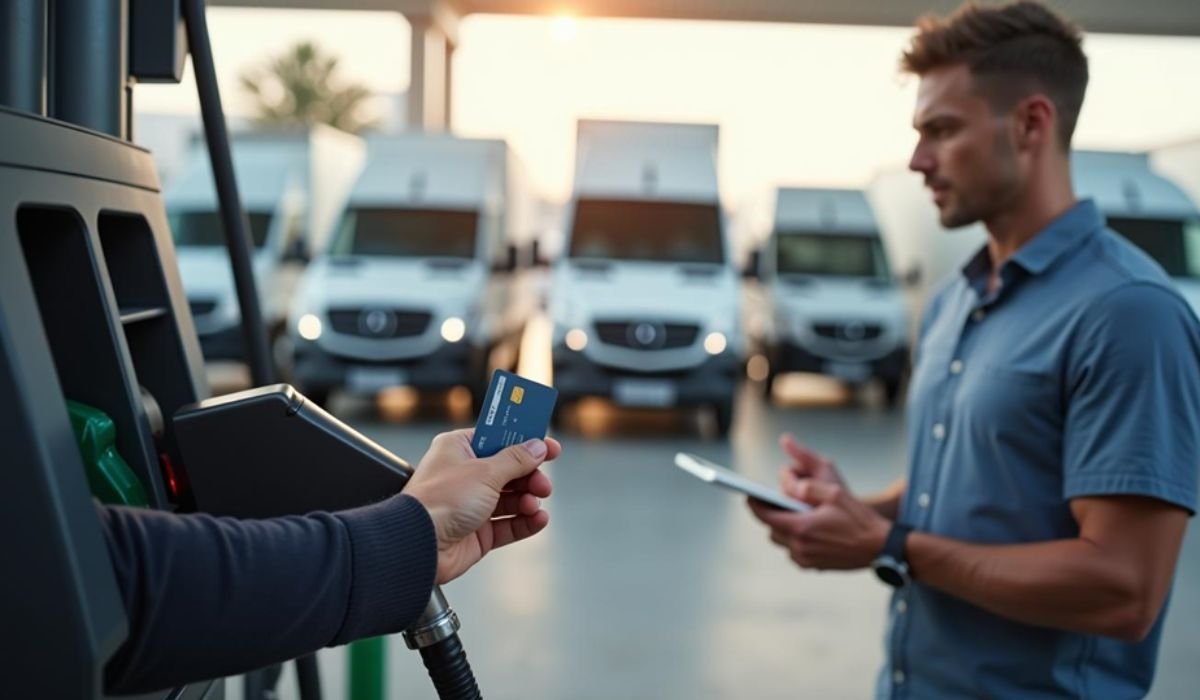Gas cards have become essential financial tools for millions of Americans looking to manage fuel expenses while earning valuable rewards on every purchase. These specialized payment cards, offered by major oil companies like Esso fleet fuel cards and financial institutions, provide exclusive discounts at participating stations and can save drivers hundreds of dollars annually through cashback programs and loyalty points. Whether you’re considering a gas credit card for personal use or exploring fleet fuel cards for business operations, understanding the different types of cards, their benefits, and application requirements will help you maximize savings at the pump.
Understanding Gas Card Types and Their Benefits
The gas card market offers four distinct categories designed to meet various customer needs and spending patterns. Gas credit cards, issued by major banks and oil companies like Chevron, function similarly to traditional credit cards but offer enhanced rewards specifically for fuel purchases at designated stations. These cards typically provide 3-5% cashback on gas purchases and often include additional benefits such as roadside assistance and purchase protection.
Prepaid gas cards and gift cards serve customers who prefer to avoid credit checks or want to control spending limits. These cards work perfectly for college students, teens learning financial responsibility, or as corporate gifts to team members. Business owners increasingly turn to fleet fuel cards for comprehensive expense management, as these specialized products offer detailed transaction reporting, customizable spending limits, and restricted merchant categories to prevent unauthorized purchases.
How Gas Cards Generate Fuel Savings and Rewards
Modern gas cards employ sophisticated loyalty programs that transform routine fill-ups into money-saving opportunities. Most cards offer tiered rewards structures where customers earn higher points percentages based on monthly spending levels or specific merchant locations. For instance, some cards provide 5% cashback at their branded stations during promotional periods, while offering 2% on other purchases and 1% on everything else.
The rewards accumulation process varies by issuer, but most programs allow members to redeem points for statement credits, gift cards, merchandise, or even future fuel discounts. Premium cards may offer sign-up bonuses worth $200-300 after meeting initial spending requirements, effectively providing several months of free gas for new account holders. Understanding these reward structures helps maximize the value extracted from every transaction.
Credit Score Requirements and Application Process
Securing approval for gas credit cards typically requires a credit score of 670 or higher, though some secured options exist for people rebuilding their credit. The application process involves providing personal information, employment details, and annual income verification through the issuer’s online portal or mobile app. Most decisions arrive within minutes for qualified applicants, with physical cards shipped within 7-10 business days.
Business applicants must additionally provide company registration documents, tax identification numbers, and potentially personal guarantees depending on the card’s credit limit requirements.
Network Acceptance and Station Coverage
Understanding where your gas card works proves crucial for maximizing convenience and savings potential. Branded cards from specific oil companies typically offer the best discounts at their proprietary stations but may have limited acceptance elsewhere. Conversely, general rewards credit cards with Visa or Mastercard logos work everywhere but might offer lower fuel-specific benefits.
Major gas card networks maintain thousands of locations across the U.S., with urban areas offering the highest station density. Rural customers should verify local acceptance before choosing a card, as some regions have limited coverage from certain brands. Many issuers provide station locator tools through their mobile apps, helping cardholders find participating locations and current fuel prices in real-time.
Managing Fees and Understanding Billing
While many gas cards advertise no annual fees, understanding the complete fee structure prevents unexpected charges. Balance transfers typically incur fees of 3-5% of the transferred amount, and cash advances often trigger immediate interest charges at rates exceeding 25%. International transactions at border stations may add currency conversion fees of 2-3%.
Smart account management involves paying balances in full each billing cycle to avoid interest charges that can quickly negate rewards earned. Most issuers offer automatic payment options through their online banking platforms, ensuring on-time payments that protect credit scores. Setting up account alerts for large transactions or approaching credit limits provides additional security against fraud while maintaining spending control.
Security Features and Fraud Protection
Gas cards incorporate multiple security layers protecting against unauthorized use at stations and other merchants. EMV chip technology, tokenization for mobile payments, and real-time fraud monitoring systems work together to safeguard account information. Most issuers offer zero liability protection for fraudulent charges, meaning customers won’t pay for unauthorized transactions reported promptly.
Additional security features include the ability to instantly freeze cards through mobile apps, set spending limits by merchant category, and receive instant notifications for every purchase. Business cards often provide enhanced controls, allowing administrators to restrict card use to specific times, locations, or merchant types, significantly reducing fraud risk while maintaining operational flexibility.
Customer Service and Account Management Resources
Quality customer service distinguishes top-tier gas card programs from basic offerings. Leading issuers provide 24/7 phone support, online chat assistance, and comprehensive self-service resources through their websites and mobile apps. These platforms enable customers to track rewards balances, dispute transactions, request credit limit increases, and update account details without calling customer service.











